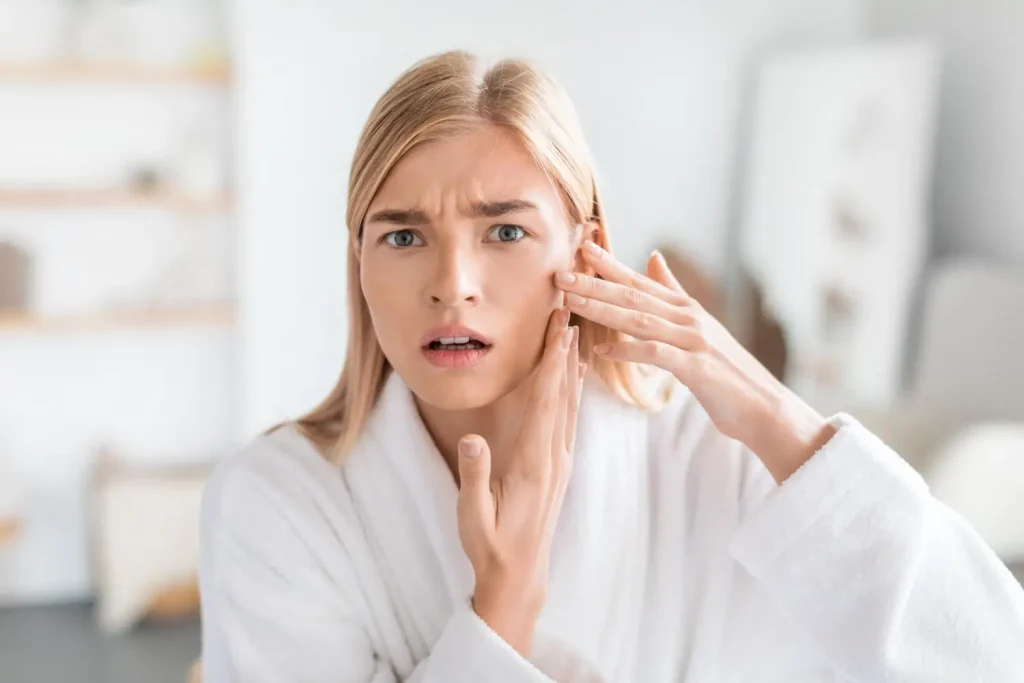Aesthetic treatments with hyaluronic acid fillers are widely recognized for rejuvenating the face, enhancing volume, and smoothing wrinkles. However, like all cosmetic procedures, dermal fillers carry potential side effects. Understanding these effects is crucial for anyone considering treatment.
Hyafilia, a leading hyaluronic acid filler, is celebrated for its natural results and versatility. While most side effects are mild and temporary, such as redness, swelling, or bruising at the injection site, rare complications like allergic reactions or granulomas can also occur.
In this article, we’ll examine the potential side effects of Hyafilia dermal fillers, providing essential insights to help you make an informed and confident decision about this popular aesthetic treatment.
Key Takeaways
- Hyafilia fillers are effective hyaluronic acid-based treatments for enhancing facial volume and reducing wrinkles.
- Common side effects include swelling, redness, bruising, and itching, which typically subside within a few days.
- Rare complications, such as nodules, infections, or allergic reactions, can occur and require prompt medical attention.
- Proper preparation, such as avoiding blood-thinning medications and following post-treatment care, including cold compresses, helps minimize side effects.
About: Medical Spa RX provides medical practices with premium products at the best prices. If you’re looking to buy Hyafilia online for your practice, the sales representatives at Medical Spa RX can give you guidance.
Common Side Effects of Hyafilia Fillers
Hyafilia fillers, like other hyaluronic acid-based injectables, can cause mild and temporary side effects. These reactions are common and typically resolve on their own within a few days.

- Swelling and Redness: Two of the most frequently reported side effects, these occur as a natural response to the injection process and usually subside within 1-3 days.
- Bruising: This can result when the needle disrupts small blood vessels under the skin, a typical side effect of fillers like Hyafilia. While generally mild, patients taking blood-thinning medications or supplements may notice more pronounced bruising.
- Itching and Discomfort: These sensations are typically short-lived and depend on the technique used during the procedure. If a practitioner recommends gentle massage or topical creams, they can alleviate discomfort.
Rare and Serious Reactions
Although rare, Hyafilia fillers can sometimes result in serious complications that require medical attention. Understanding these potential risks helps patients stay informed and seek prompt care if needed.

- Nodules: Hard lumps, or nodules, may form beneath the skin as a reaction to the filler. While uncommon, they can cause discomfort or visible irregularities. Treatment options include massage, hyaluronidase injections to dissolve the filler, or medical intervention in severe cases.
- Infection: Usually caused by bacteria entering the injection site, symptoms like increased redness, pain, or pus should be addressed immediately. Antibiotics or drainage may be required to address the infection.
- Allergic Reactions: Though hyaluronic acid is naturally found in the body, allergic reactions to fillers can occur. Signs include persistent redness, itching, or swelling. Severe reactions, such as difficulty breathing or extensive skin irritation, are extremely rare but require urgent medical care.
Managing and Minimizing Side Effects
Proper preparation and aftercare can significantly minimize the risk of side effects from Hyafilia fillers and ensure a smoother recovery. Patients should avoid blood-thinning medications, alcohol, and strenuous activity for at least 24–48 hours before and after the procedure. Applying a cold compress post-treatment can help reduce swelling and bruising at the injection site.

Over-the-counter remedies, such as antihistamines or arnica gel, may be recommended to manage mild side effects like redness, bruising, or itching. Patients should seek immediate medical attention for rare complications, such as nodules or allergic reactions. Choosing an experienced practitioner who adheres to sterile injection techniques is critical to preventing serious side effects like infections.
When comparing Hyafilia vs Juvederm, both fillers are effective and generally safe, but Hyafilia’s smooth texture and advanced formulations may result in fewer post-treatment irregularities. However, following personalized aftercare instructions remains essential for achieving the best results with either filler.
Conclusion
Side effects from Hyafilia fillers are typically mild and temporary, including swelling, redness, bruising, or itching. Serious complications, such as lumps or infections, are rare and can often be avoided with proper aftercare and skilled application.
By following post-treatment recommendations and choosing an experienced practitioner, patients can minimize risks and enjoy a smooth recovery, achieving natural and lasting results.
FAQs
1. What are the most common side effects of Hyafilia fillers?
The most common side effects include swelling, redness, bruising, and itching at the injection site. These are usually mild and resolve within 1–3 days.
2. How can I minimize side effects after a Hyafilia filler treatment?
To reduce side effects, avoid blood-thinning medications, alcohol, and strenuous activities for 24–48 hours post-treatment. Applying a cold compress can also help alleviate swelling and bruising.
3. Are serious complications from Hyafilia fillers common?
Serious complications, such as nodules, infections, or allergic reactions, are rare. Contact your doctor immediately if you experience symptoms like increased redness, severe swelling, or persistent discomfort.
4. What should I do if I suspect an allergic reaction to Hyafilia?
If you notice unusual symptoms such as persistent redness, itching, or difficulty breathing, seek immediate medical care, as these may indicate an allergic reaction.
References
Liao Z, Ma J, Bu X, et al. Effectiveness and Safety of a Hyaluronic Acid Filler for Chin Augmentation and Correction of Chin Retrusion: A Multi-center, Prospective, Randomized Controlled Trial. Aesthetic Plastic Surgery. Published online November 14, 2024. doi:https://doi.org/10.1007/s00266-024-04494-0
MHS KL MD. Dermal fillers: The good, the bad and the dangerous. Harvard Health. Published July 15, 2019. https://www.health.harvard.edu/blog/dermal-fillers-the-good-the-bad-and-the-dangerous-201907152561





















